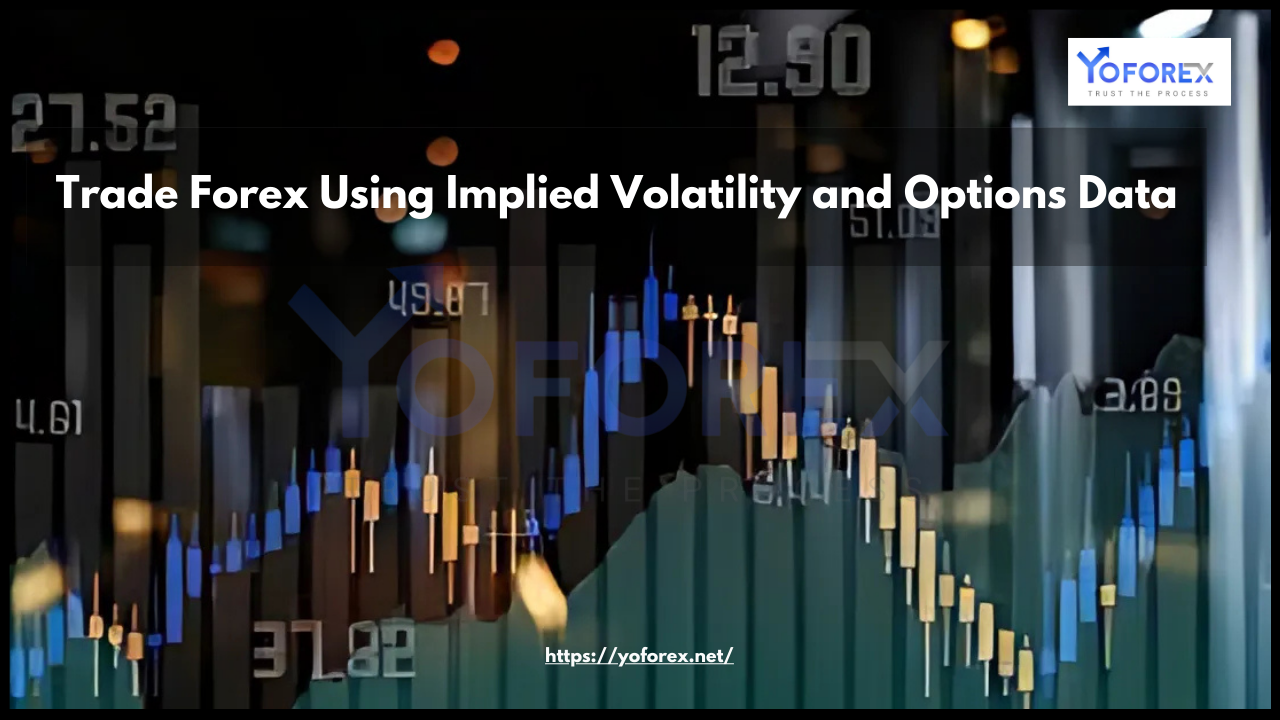In the world of forex trading, traders often rely on technical indicators, fundamental analysis, and market sentiment to make informed decisions. However, one often overlooked yet powerful tool is implied volatility (IV) and options data. While options are more commonly associated with stock and commodity markets, forex options can provide valuable insights into market expectations and potential price movements. In this guide, we will explore how traders can utilize implied volatility and options data to enhance their forex trading strategies.
Understanding Implied Volatility in Forex Trading
Implied volatility represents the market’s expectations of future price fluctuations over a given period. It is derived from options prices and reflects the level of uncertainty or risk perceived by traders.
- High implied volatility suggests that the market anticipates large price swings, often due to economic events, geopolitical tensions, or unexpected news.
- Low implied volatility implies that the market expects a period of stability with minimal price fluctuations.
Forex traders can use IV to gauge market sentiment and adjust their strategies accordingly. For instance, when implied volatility is high, traders might expect breakouts or trend reversals, whereas low IV can indicate range-bound markets.
How Forex Options Data Can Improve Trading Decisions
Forex options data provides insight into market expectations regarding currency pairs. Some key metrics traders should pay attention to include:
- Implied Volatility Skew
- This indicates how implied volatility differs between out-of-the-money (OTM), at-the-money (ATM), and in-the-money (ITM) options.
- A positive IV skew suggests that traders are hedging against downside risk, signaling bearish sentiment.
- A negative IV skew suggests greater demand for call options, signaling bullish sentiment.
- Risk Reversals
- This measures the difference in implied volatility between calls and puts.
- A positive risk reversal indicates that call options are more expensive than put options, signaling bullish sentiment.
- A negative risk reversal suggests that put options are in higher demand, signaling bearish sentiment.
- Open Interest & Volume
- Higher open interest in particular strike prices can indicate strong market interest and potential support/resistance levels.
- Increasing volume in specific options contracts can signal upcoming volatility or trend shifts.
How to Trade Forex Using Implied Volatility
1. Breakout Trading with IV Spikes
When implied volatility spikes, it often precedes significant price movements. Traders can capitalize on this by:
- Identifying key support and resistance levels.
- Placing breakout trades when IV is rising, anticipating a strong price move.
- Setting stop-loss levels just outside recent consolidation zones.
2. Trend Confirmation with Risk Reversals
By analyzing risk reversals, traders can confirm existing trends:
- If a currency pair is in an uptrend and risk reversals are positive, this strengthens the bullish bias.
- Conversely, if a downtrend is supported by negative risk reversals, the bearish momentum is likely to continue.
3. Volatility Mean Reversion Strategy
Forex markets tend to cycle between periods of high and low volatility. Traders can:
- Enter counter-trend positions when IV is extremely high, expecting a volatility contraction.
- Trade within ranges when IV is low, capitalizing on mean reversion setups.
4. Hedging Forex Positions with Options
For traders who hold longer-term forex positions, options can be a useful hedge against adverse moves:
- Buying a put option can protect long forex trades from downturns.
- Buying a call option can protect short forex trades from unexpected rallies.
Practical Example: Trading EUR/USD Using Implied Volatility
Let’s say you are analyzing EUR/USD, and you notice the following:
- Implied volatility is rising due to an upcoming ECB interest rate decision.
- Risk reversals are negative, indicating traders are purchasing put options to hedge against a decline.
- Options open interest is concentrated at a key strike price, suggesting a possible resistance level.
Using this data, you could:
- Wait for confirmation of a breakout or rejection at the resistance level.
- Short EUR/USD if price reacts negatively at the resistance, aligning with negative risk reversals.
- Place a stop-loss above the key resistance level to manage risk.
Tools for Analyzing Implied Volatility and Options Data
To effectively incorporate implied volatility and options data into forex trading, traders can use various platforms and tools:
- Bloomberg Terminal & Reuters Eikon: Professional-grade platforms for in-depth forex options analysis.
- Cboe FX Options Data: Provides real-time forex options market insights.
- TradingView & ThinkorSwim: Charting tools that offer volatility overlays.
- OptionStrat & IV Rank Indicators: Tools to visualize implied volatility and risk reversals.
Final Thoughts
Implied volatility and forex options data provide traders with a unique edge in predicting price movements and managing risk. By integrating IV analysis with traditional forex trading strategies, traders can enhance their decision-making and improve their risk management. Whether you’re trading breakouts, confirming trends, or hedging positions, understanding how the market perceives future volatility is a powerful tool that can help you stay ahead of market moves.
Stay Updated & Download: https://yoforex.net/trade-forex-using-implied-volatility-and-options-data/
😎 Happy Trading 😎


